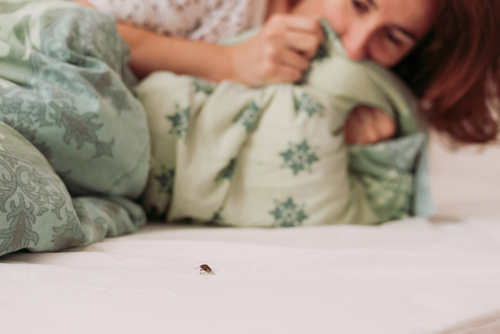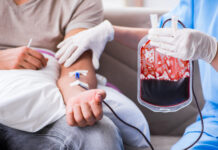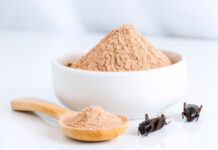
As the bed bug infestation in France reaches alarming levels, it’s crucial for Britons to be well-informed about these pesky insects. Bed bugs are not just a nuisance; they can also hitch a ride on clothing, luggage, or personal items, turning your home into an unwanted souvenir of your travels.
Bed bugs are tiny brown insects that feed on blood, usually at night. They are known to hide in places like bed frames, mattresses, clothing, furniture, and even behind pictures. A key indicator of an infestation is a musty odor whenever they are around in large numbers.
Which is actually the worse to live with.
Bed bugs Or Mosquitoes pic.twitter.com/7gl4eCp7Aa
— 𝗪𝗔𝗟^𝗞𝗘𝗥 🍏 (@vwalkernet) October 4, 2023
Other signs include bites on your skin, tiny black spots on your mattress, shells that the bugs have shed, and blood spots on your sheets. These blood spots can occur if you squash a bug after it has fed.
Bed bugs tend to prefer fabric or wood over plastic and metal, and often hide near where you sleep. They are unlikely to pester you in the daytime, and usually only come out when you’re asleep at night. If you fail to spot the critters lurking nearby, red marks or rashes on your body could be an indicator that they are indeed present.
Another sure sign of a bed bug invasion is the sight of clusters of tiny white spots. These are bed bug eggs which are small in size and white in colour and can be smooth and pearly to the touch.
They are similar in size to a grain of salt and are shaped like a barrel, so when scattered across a white mattress they can be exceptionally difficult to spot.
Prevention is always better than cure. To avoid an infestation, do not buy secondhand furniture without inspecting it properly first. Also, don’t take luggage or clothing inside if you have traveled from a place where you suspect there may be bedbugs.
🎞️ How to spot and avoid bedbugs 😲 pic.twitter.com/NBwxXz4msQ
— DW Science (@dw_scitech) October 4, 2023
If you know that you have bedbugs in your home, and are being bitten, a mattress protector can trap them there, without actually killing them. These can cost as little as about $5, although prices vary.
If you are wondering how bedbugs get in in the first place, one of the most common ways is if they are brought in from luggage after a holiday.
Bedbugs are often resistant to insecticides and therefore difficult to rid yourself of. If you suspect an infestation, contact your local council or pest control service. Wash affected bedding or clothing at 60°C or tumble dry on a hot setting for at least half an hour. Alternatively, put bedding in a plastic bag in a freezer for four days.
In very extreme cases, exterminators might use heat or cold treatments to kill the insects. Bedbugs thrive at around 30C, but are killed in minutes either above 50C or below -10C.
This knowledge can also be used by us if the infestation is in the right place or on a small enough scale. If you know the bedbugs, or their eggs, are on clothes or bedding then a hot wash and tumble dry should do the trick and wipe them out.
Stay vigilant, stay informed, and keep these pesky pests at bay.










